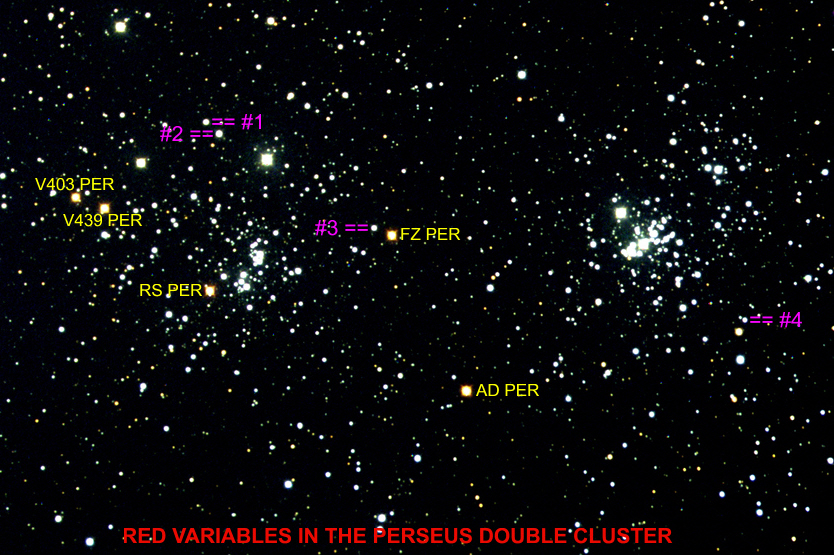
These clusters are young and most of the stars tend to be blue or white in color. However note the reddish-orange stars scattered throughout the clusters. These are some of the most massive stars that have evolved into red-giant stars. These stars will tend to be long period variable stars and are easy to identify in this image.
| STAR | B | V | R |
| #1 | 10.032 | 9.660 | 9.410 |
| #2 | 9.086 | 8.786 | 8.600 |
| #3 | 9.700 | 9.534 | 9.430 |
| #4 | 10.988 | 11.089 | 11.150 |

Combination of 120 second images in B, V and R bands
AD PER - is listed as a semi-regular star with an amplitude >1 magnitude. Less than 1/3rd of this range was seen during the 180 day trial.
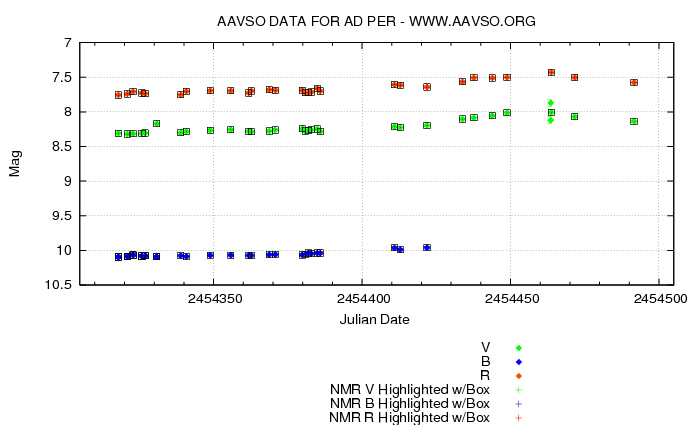
FZ PER - A semi-regular variable and the best known variable star in the double cluster. FZ PER showed few signs of the reported 1 magnitude variability during the 180 day trial.
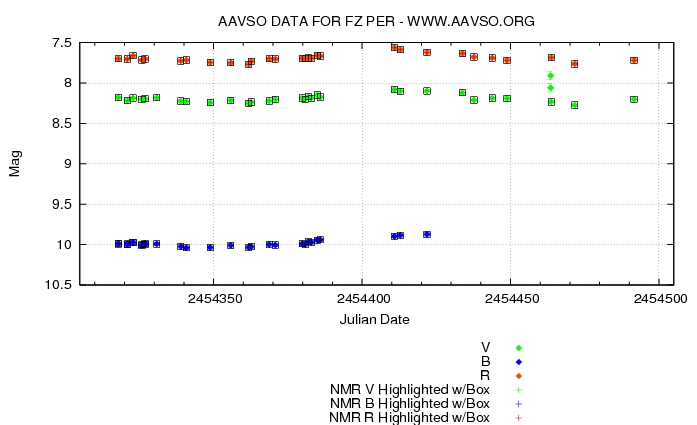
RS PER - Stated to be a semi-regular variable star with a large (> 2 magnitudes) amplitude. A period of several hundred days is suggested by the results obtained so far.
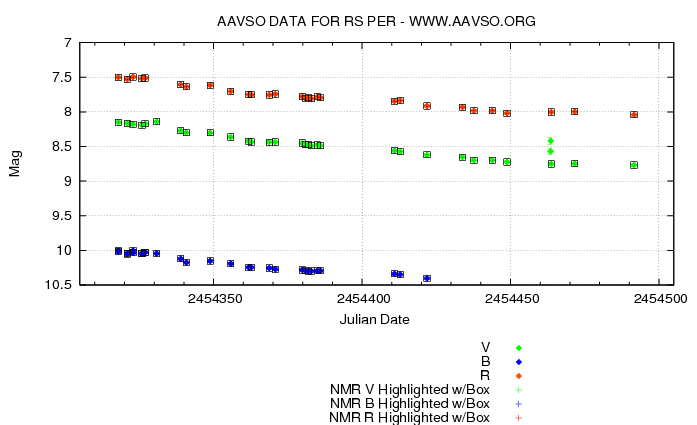
V403 PER - Reported as being a long period variable star with a low amplitude and the results obtained confirm this. Not a very exciting target for the variable star observer!
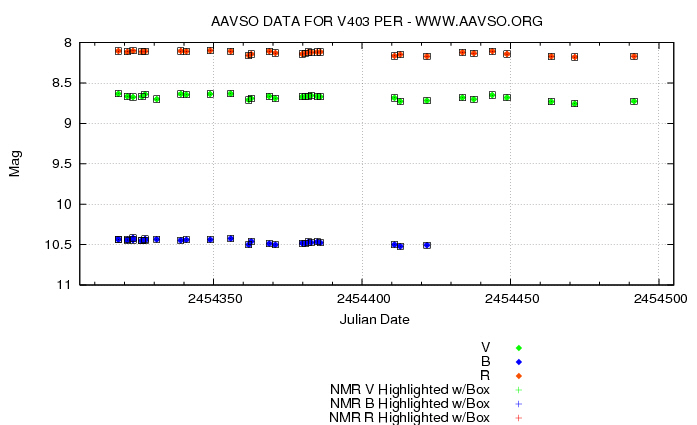
V439 PER - Reported as being a long period variable star with a slightly larger amplitude than V403 PER and the results obtained confirm this. Again not a very exciting target for the variable star observer!
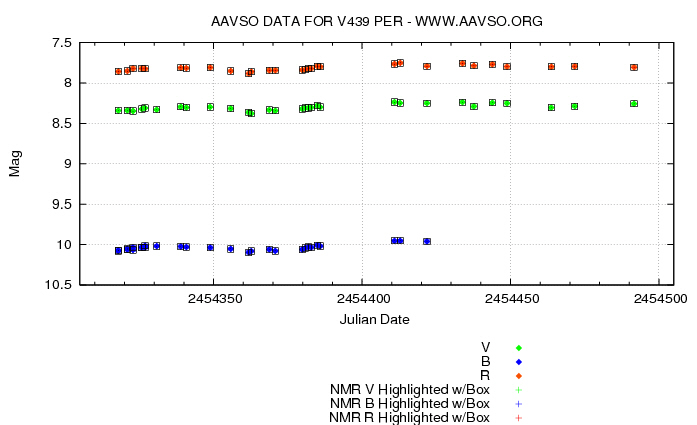
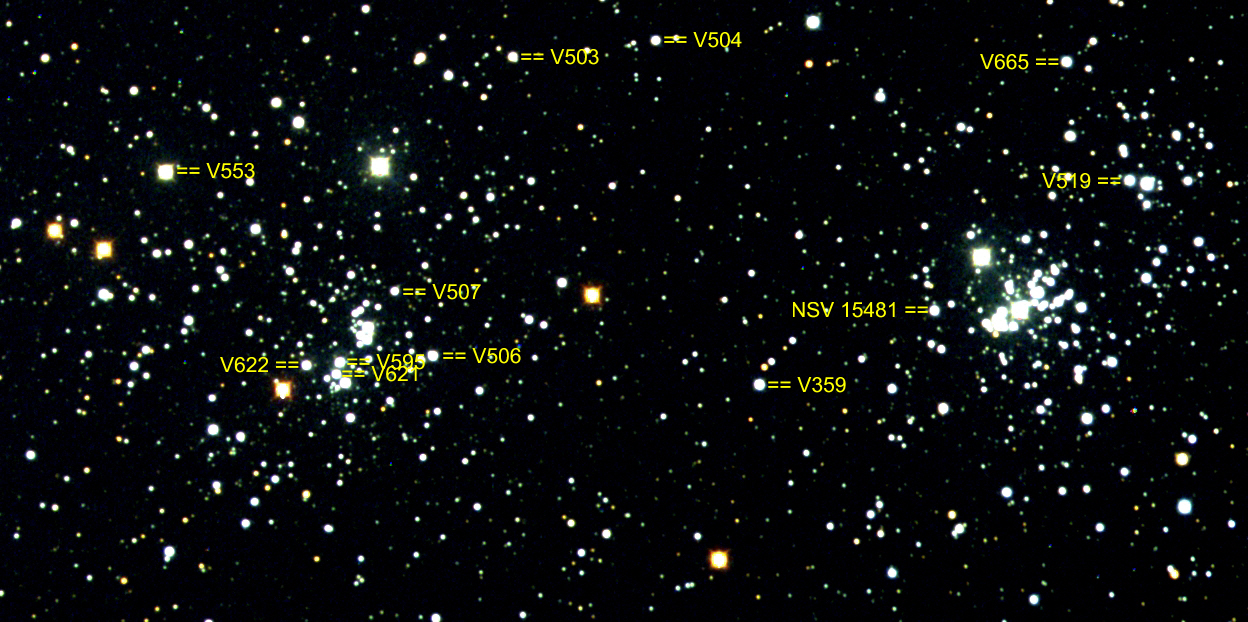
TYPE ACYG = Supergiants with multiple non-radial pulsations and emission spectra. Very small variations with periods of weeks.
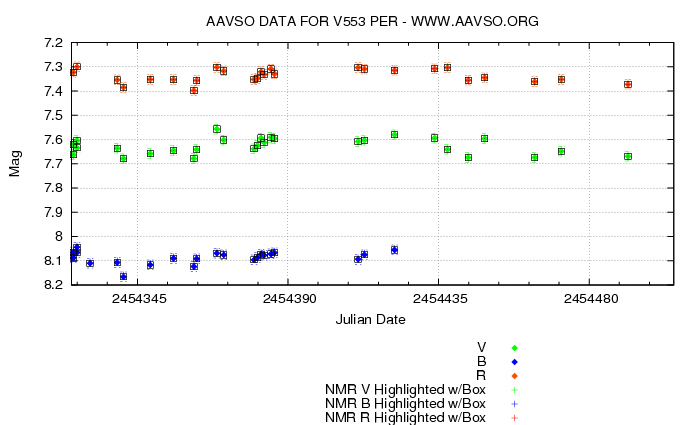
TYPE BCEP = Beta Cep. Blue stars with variations 0.1-0.3 mags and periods 0.1-0.7 days, caused by radial pulsations. Multiple periods are common.
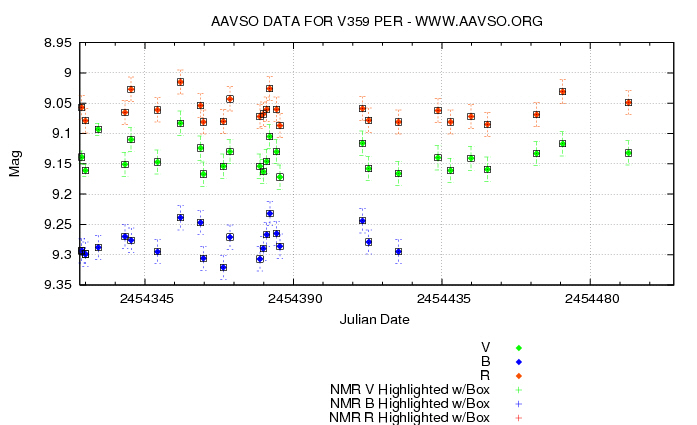
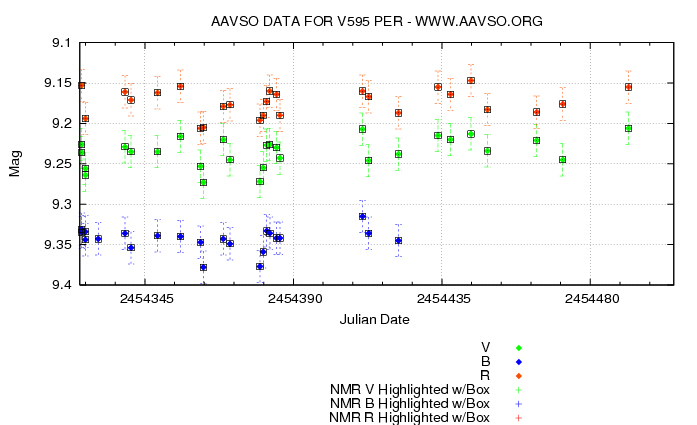
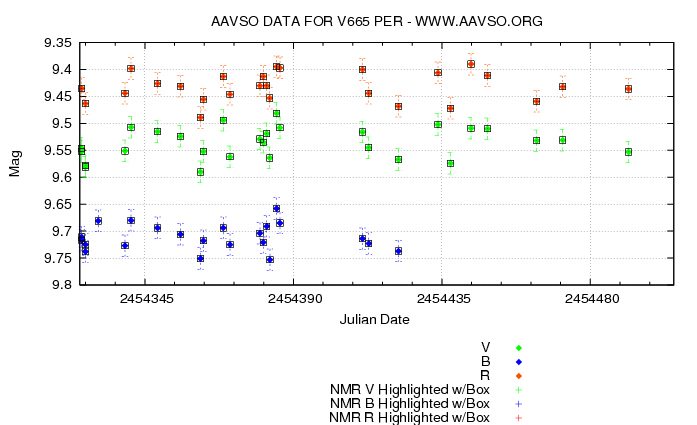
TYPE BE = "It becomes more and more clear that, although the majority of Be stars are photometrically variable, not all of them could be properly called GCAS variables. Quite a number of them show small-scale variations not necessarily related to shell events; in some cases the variations are quasi-periodic. By now we are not able to present an elaborated system of classification for Be variables, but we adopt a decision that in the cases when a Be variable cannot be readily described as a GCAS star we give simply BE for the type of variability."
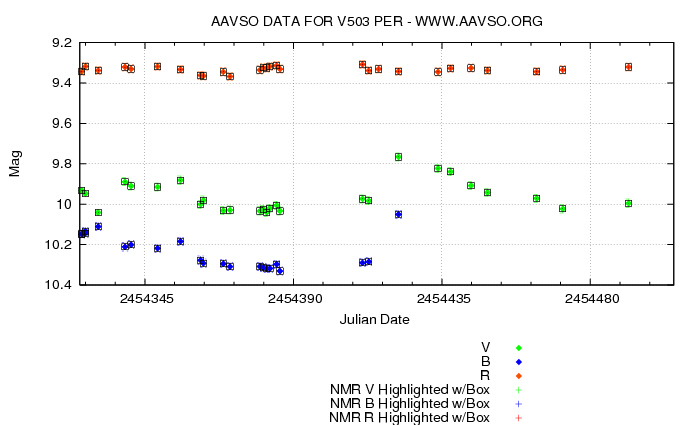
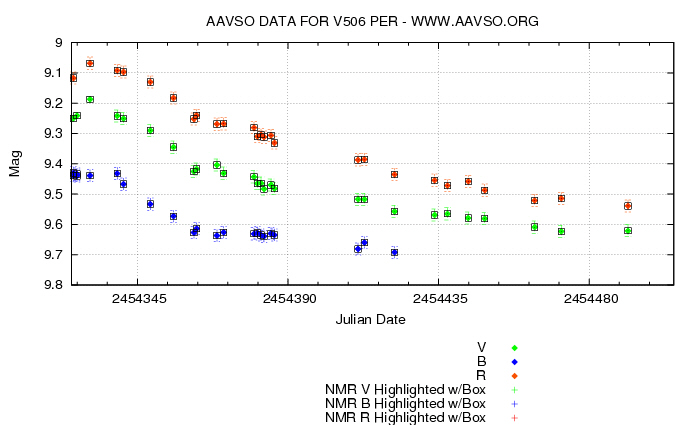
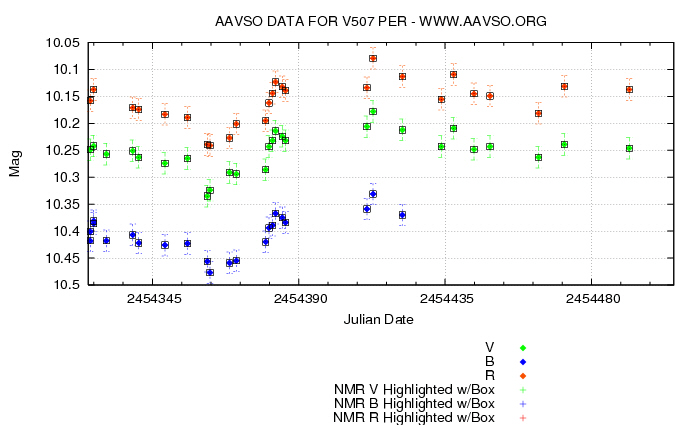
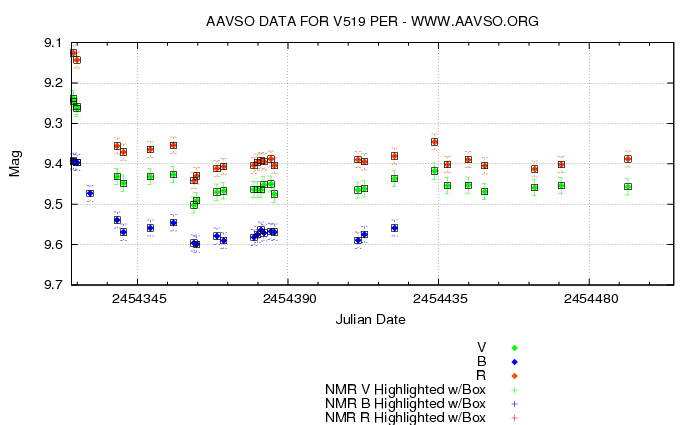
TYPE EA = Binaries where one component periodically passes in front of the other. Periods range from hours to years.
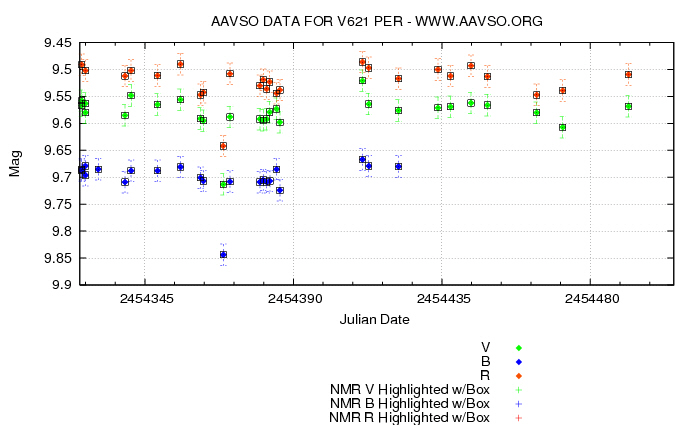
TYPE ELL = elliptical. Tidally distorted close binary stars, but no eclipses are observed (see EB class). Variations < 0.1 mag.
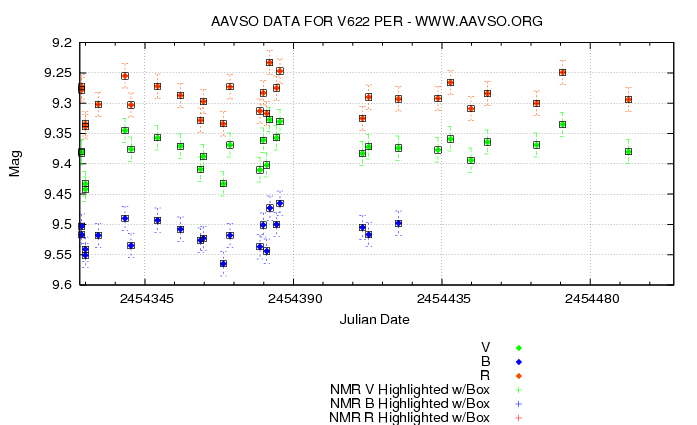
In collaboration with the Remote Astronomical Society Observatory
Martin Nicholson - Daventry, United Kingdom.
This page was last updated on October 4th 2008.